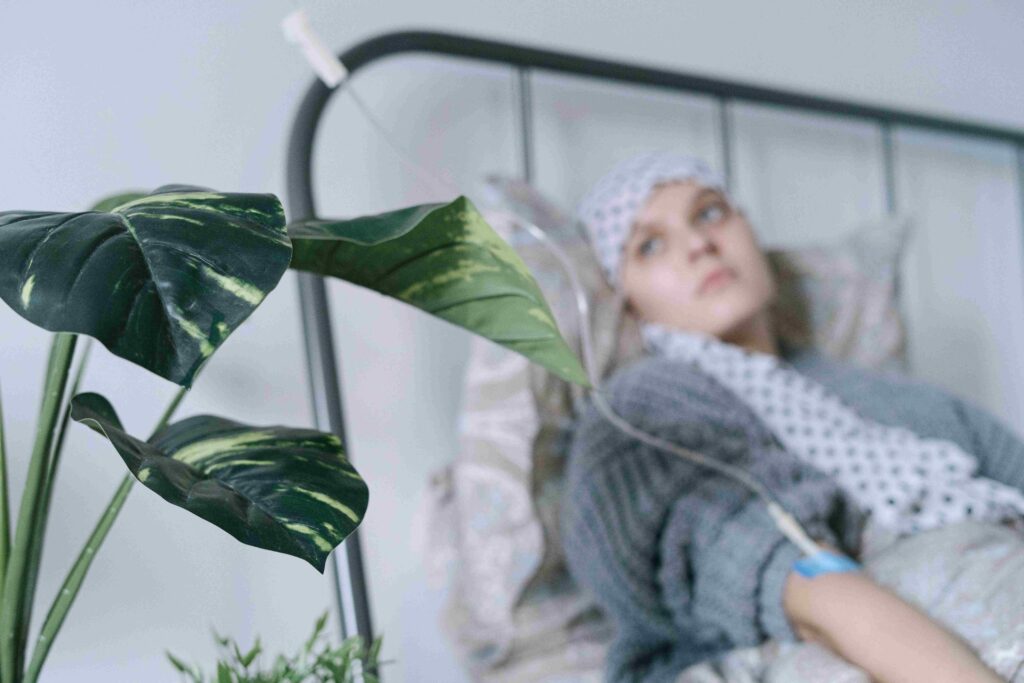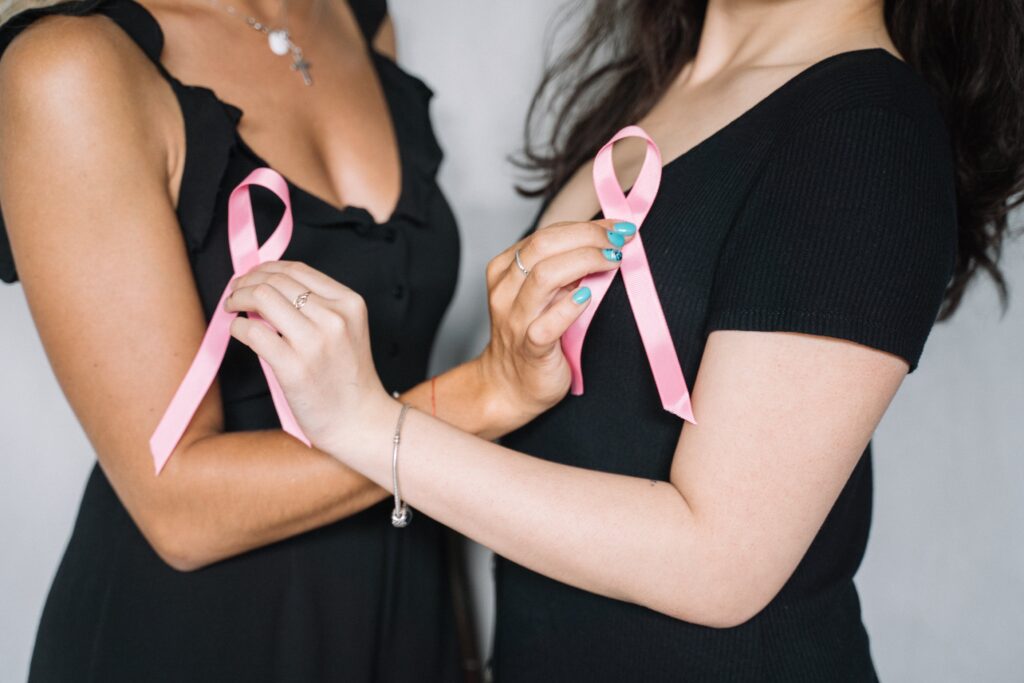Today, we embark on a crucial journey to shed light on the lesser-known symptoms of breast cancer. Knowledge is power, and staying informed about all facets of this relentless disease can make a world of difference. While most are familiar with the common signs, it’s essential not to overlook the subtle whispers that may reveal themselves in unexpected ways. Join us as we delve into uncharted territory and equip ourselves with invaluable insights to protect our health and those dearest to us. So, grab a cup of tea, settle in comfortably, and let’s explore these hidden clues together – because being well-informed could be life-changing.
Introduction to Breast Cancer and its Prevalence
Breast cancer is one of the most common types of cancer among women, with about 1 in 8 women developing it at some point in their lives. While it primarily affects women, men can also develop breast cancer, although it is much less common.
According to recent statistics, breast cancer is the second leading cause of death among women worldwide. In fact, every year, approximately 2.3 million new cases are diagnosed globally and around 685,000 people die from this disease. The prevalence of breast cancer varies across different regions and ethnic groups.
For example, statistics show that developed countries have higher rates of breast cancer compared to developing countries. This could be due to factors such as lifestyle choices (e.g., diet and physical activity), access to healthcare services for early detection and treatment, and genetic predisposition.
Some possible risk factors for developing breast cancer include

- Age: As mentioned earlier, older women are more likely to develop breast cancer.
- Genetics: A family history of breast or ovarian cancer can increase an individual’s risk, especially if it involves mutations in the BRCA1 and BRCA2 genes.
- Hormonal factors: Estrogen and progesterone are hormones that can stimulate the growth of breast cells. Exposure to these hormones for a more extended period, such as starting menstruation at an early age or reaching menopause at a later age, may increase one’s risk of developing breast cancer.
- Lifestyle choices: Smoking, excessive alcohol consumption, lack of physical activity, and being overweight has been linked to an increased risk of breast cancer.
It is crucial to understand the prevalence and risk factors associated with breast cancer. By staying informed about this disease, we can take steps towards prevention and early detection. In the next section, we will discuss some lesser-known symptoms of breast cancer that you should be aware of.
Commonly Known Symptoms of Breast Cancer
It occurs when cells in the breast begin to grow abnormally and form a tumor. While there are various types of breast cancer, some symptoms of breast cancer are commonly seen across all types. These symptoms of breast cancer can serve as warning signs, and it is important to recognize them early on for timely treatment.
Lump or Thickening in the Breast
The most common symptom of breast cancer is a lump or thickening in the breast tissue. This can be felt during self-examination or may be discovered during a routine mammogram. However, not all lumps are cancerous, but it is essential to consult a doctor if you notice any changes in your breasts.
Changes in Breast Size or Shape

Another noticeable symptoms of breast cancer is a change in breast size or shape. One breast may become larger than the other, or there may be visible swelling or distortion of the breast shape.
Nipple Discharge
Any abnormal discharge from the nipple should not be ignored as it could indicate an underlying issue like an infection or even breast cancer. This discharge may be clear, bloody, yellowish, or greenish and can occur spontaneously without squeezing your nipple.
Dimpling of Skin
If you notice any dimpling or puckering on your skin resembling orange peel, it could be a sign of inflammatory breast cancer (IBC). IBC often presents with redness and warmth in the affected area, along with tenderness and itchiness.
Changes in Nipple Appearance
Inverted nipples that were previously pointing outward could turn inward suddenly. Additionally, changes such as scaliness, crusting, flaking around nipples need to be examined by a doctor immediately as they can also indicate Paget’s disease- a rare form of breast cancer that starts at the nipple.
Lesser-Known Symptoms of Breast Cancer
Breast cancer is one of the most common forms of cancer among women, affecting millions of women worldwide every year. While the most well-known symptom of breast cancer is a noticeable lump or mass in the breast, there are several other lesser-known symptoms that can also indicate the presence of this disease. Being aware and informed about these lesser-known symptoms can help in early detection and treatment, leading to a better chance of survival.
One lesser-known symptom of breast cancer is changes in the skin’s appearance on and around the breast. This may include redness, swelling, irritation, or dimpling. The skin may also appear puckered or thickened, resembling an orange peel. These changes occur due to inflammation caused by cancer cells spreading to the skin’s surface. Any unusual changes should be consulted with doctor immediately.
Another lesser-known symptoms of breast cancer is nipple discharge other than milk during breastfeeding or pregnancy. If you experience clear or bloody discharge from your nipples without any apparent reason, it could be a sign of breast cancer. Additionally, inverted nipples (nipples turning inward) without any previous history can also be an indication of breast cancer.
Breast pain or discomfort is a common symptoms of breast cancer occurrence for many women during their menstrual cycle. However, persistent pain that doesn’t go away after menstruation could be a cause for concern. Breast pain caused by breast cancer may not necessarily occur only in one specific area but may affect the entire breast as well.
Unexplained weight loss can also be a warning sign for various types of cancers, including breast cancer. In advanced stages of breast cancer, tumors release chemicals that suppress appetite and increase metabolism, resulting in weight loss despite maintaining regular eating habits.
If you notice any swelling or lumps under your armpits (lymph nodes), it could be symptoms of breast cancer has spread to these areas through lymphatic vessels located near the breasts.
It is important to note that experiencing one or more of these symptoms does not necessarily mean you have breast cancer. However, it is essential to consult a doctor for further evaluation and testing to rule out any potential concerns.
Steps to Take if You Notice Any Symptoms Breast Cancer
If you notice any symptoms of breast cancer that may be indicative of breast cancer, it is important to take immediate action. While these symptoms may not always mean that you have breast cancer, it is better to err on the side of caution and seek medical attention as soon as possible.
Here are the steps you should take if you notice any potential symptoms of breast cancer:
Don’t panic
The first remain calm. It’s natural to feel anxious or scared when you notice changes in your body, but panicking will only make things worse. Take a deep breath and try to stay positive.
Observe and document your symptoms of breast cancer
Make note of any changes or abnormalities in your breasts, such as lumps, swelling, or discharge from the nipples. It’s also important to pay attention to any changes in skin texture or color on and around the breasts.
Perform a self-exam
Conducting regular self-exams can help you become familiar with your breasts and detect any changes early on. You can learn how to perform a proper self-exam from your doctor or through online resources.
Schedule an appointment with your doctor

If you notice any concerning symptoms of breast cancer, it’s best to schedule an appointment with your doctor right away. They will be able to evaluate your symptoms and determine if further testing is necessary.
Get a mammogram
Depending on your age and risk factors, your doctor may recommend getting a mammogram – an X-ray image of the breast tissue – for further evaluation of any suspicious findings.
Follow up with recommended tests
Based on the results of the mammogram and other tests, your doctor may recommend additional imaging tests like ultrasounds or MRIs, or even a biopsy if necessary.
Seek support from loved ones
Dealing with potential symptoms of breast cancer can be overwhelming both physically and emotionally; don’t hesitate to reach out for support from friends and family. They can provide a listening ear, offer practical help, or accompany you to doctor’s appointments.
Remember, early detection is key in the most successful treatment of breast cancer. So if you notice any symptoms, don’t delay seeking medical attention. Taking these steps will not only give you peace of mind but also ensure that you receive timely and appropriate medical care if needed.
Prevention Methods and Lifestyle Changes for Reducing Risk
While there are certain risk factors for breast cancer that cannot be changed, such as genetics and age, there are still steps that can be taken to reduce the risk of developing this disease. By implementing healthy lifestyle habits and being aware of potential risk factors, individuals can take proactive measures to prevent breast cancer.
Maintain a Healthy Weight
Overweight has been linked to an increased risk of breast cancer. So, it is important to maintain a healthy weight through a balanced diet and regular physical activity. Aim for at least 30 minutes of moderate exercise each day and make sure to include plenty of fruits, vegetables, whole grains, and lean proteins in your diet.
Limit Alcohol Consumption
Research has shown that excessive alcohol consumption can increase the risk of breast cancer. It is recommended to limit alcohol intake to no more than one drink per day for women and two drinks per day for men.
Quit Smoking
Smoking not only increases the risk of lung cancer but also has been linked to an increased risk of breast cancer in some studies. Quitting smoking not only reduces your chances of developing many other health issues but also decreases the likelihood of developing breast cancer.
Breastfeed If Possible
For mothers who are able to breastfeed their babies, research suggests that it may have a protective effect against breast cancer. Breastfeeding can help lower estrogen levels, which may play a role in the development of this type of cancer.
Be Aware Of Hormone Therapy Risks
Certain hormone therapies, such as those used during menopause, have been associated with an increased risk of breast cancer. If you are considering hormone therapy or currently on it, talk with your doctor about potential risks and alternatives.
Being Mindful Of Environmental Factors
Exposure to certain environmental toxins like radiation or chemicals found in everyday products may increase the risk of developing breast cancer. It is important to be aware of potential harmful substances and try to limit your exposure as much as possible.
In addition to these prevention methods, it is also crucial to perform regular self-exams and go for routine screenings. By being proactive about your breast health and making healthy lifestyle changes, you can reduce the risk of developing breast cancer. Remember, early detection is key to successfully treating this disease. So stay informed and take care of your body to decrease the chances of facing this life-threatening illness.
What are the symptoms of breast cancer in female?
The symptoms of breast cancer in females can vary, and it’s important to note that not everyone with breast cancer will experience noticeable symptoms. Regular screening and self-exams are crucial for early detection. Common symptoms of breast cancer in females may include: Lump or Thickening, Changes in Breast Size or Shape, Pain or Discomfort, Changes in the Skin, Unexplained Swelling etcetera.
What Are the Symptoms of Breast Cancer?
Changes in the Nipple, Nipple or Breast Pain
Symptoms Breast cancer can vary, and it’s important to note that many women with breast cancer may not experience any symptoms at an early stage. Regular screening and self-examinations are crucial for early detection.
What is the biggest symptoms of breast cancer?
There isn’t a single “biggest” symptoms of breast cancer, as symptoms can vary among individuals. The most common and widely recognized symptom, however, is the presence of a lump or mass in the breast. Not all lumps are cancerous, but any new or unusual lump should be evaluated by a healthcare professional.
What are Stage 4 symptoms breast cancer?
Stage 4 breast cancer, also known as metastatic breast cancer, occurs when cancer cells have spread beyond the breast and nearby lymph nodes to other parts of the body. Symptoms of stage 4 breast cancer can vary depending on the organs or areas affected by metastasis.
What are rare symptoms of breast cancer?
While most cases of present with common symptoms breast cancer, some individuals may experience rare or less typical signs. It’s important to note that rare symptoms do not necessarily mean the presence of breast cancer, and they can also be caused by various benign conditions. However, any persistent or unusual changes should be discussed with a healthcare professional for further evaluation.

